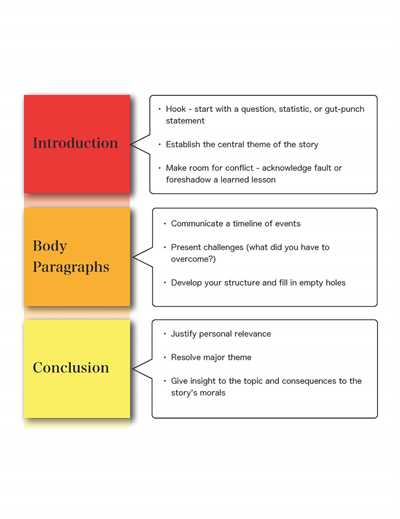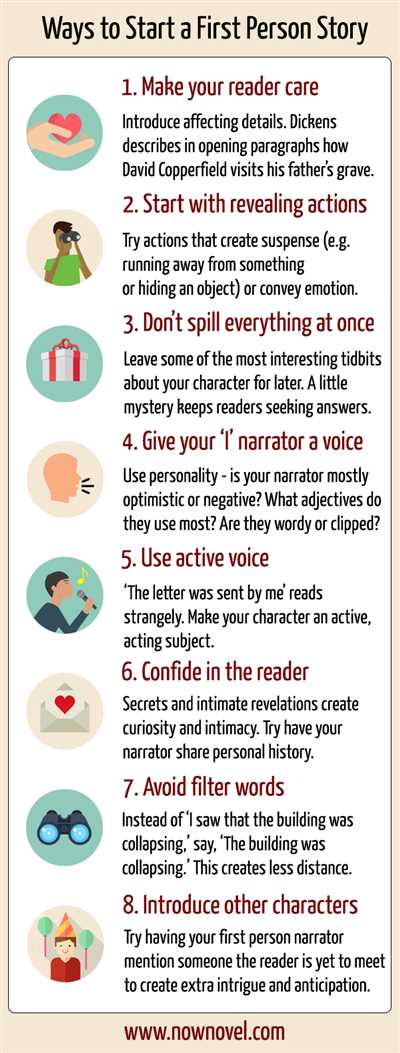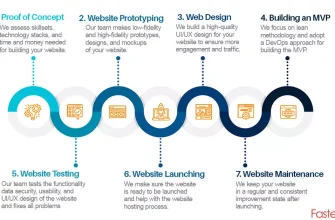
Writing a narrative story is an art that requires careful planning and analysis. The opening line of your narrative sets the tone for the rest of the story. It should grab the reader’s attention and make them want to read more. But how do you create an engaging opening that hooks the reader and sets the stage for an unforgettable story?
Firstly, it’s important to understand that the opening line doesn’t necessarily have to be the first line you write. Many writers find it helpful to write the opening line after they have written the rest of the story. This enables them to fully analyze the main character, the plot, and the overall theme of the story.
When you’re ready to start writing the opening line, think about the purpose of your story and what you want to achieve with it. The opening line should give the reader a glimpse into the heart of the story and set the stage for what is to come. It should be unique and grab the reader’s attention right from the start.
One way to do this is by using vivid imagery or a thought-provoking question. For example, instead of starting with a generic opening like, “Once upon a time,” you could try something more captivating like, “In the middle of a stormy night, Nina Budnitz cries for help.” This opening immediately engages the reader and makes them want to know more about Nina and why she is crying.
In addition to the opening line, it’s also important to analyze the other features of your narrative story. Consider the setting, the time period, and the number of characters. These elements will help you shape the opening line and give the reader a sense of what to expect.
Furthermore, consider using narrative techniques such as foreshadowing or starting in medias res to create intrigue and suspense. Foreshadowing hints at future events in the story, while starting in medias res throws the reader into the middle of the action. Both techniques can be effective in capturing the reader’s attention from the first paragraph.
Finally, make sure that your opening line is grammatically correct and free of any errors. It should be clear and concise, giving the reader a taste of what’s to come without giving away too much information. By following these tips and techniques, you can create an opening line that will leave a lasting impression and draw the reader into your narrative story.
Find Your Main Character

When it comes to starting a narrative story, one of the first things you need to do is find your main character. This is the person or being who will drive the story forward, and who the readers will connect with the most.
So, how do you find your main character? Well, there are several ways to go about it. Some writers start with a line or a concept that pops into their head, and from there they build the character around it. Others think about how they want the story to unfold and what type of character would be best suited to experience it.
If you’re still struggling to find your main character, try thinking about someone you know or someone you’ve heard about who would fit the narrative. This could be a friend, a family member, a coworker, or even a stranger you’ve encountered. Once you have someone in mind, think about how they would react in the situations you’ve planned for your story. Would they be brave and courageous, or hesitant and cautious?
Nina Budnitz once said, “The character isn’t what they look like, it’s who they are.” So, don’t worry too much about the physical features of your character. Focus more on their thoughts, emotions, beliefs, and actions. This is what will make them unique and interesting to the readers.
Writing Exercise:
To help you in the process of finding your main character, try this writing exercise. Imagine a moment in time when your character cries out from the depths of their heart. What is causing them pain or joy? How do they react without holding back? This will give you insights into who your character truly is, and what drives them.
Remember, your main character doesn’t have to be perfect or have it all figured out from the beginning. In fact, flaws and internal conflicts often make for more dynamic and relatable characters. It’s the journey that they go through and how they grow and change that will captivate your readers.
Security and Privacy Considerations:
While it’s important to understand your main character on a deep level, it’s equally important to protect the privacy and security of your website visitors. In the process of collecting user data for the purpose of analyzing and improving your site’s performance, be sure to adhere to best privacy practices.
For example, if you use third-party plugins or services like Hotjar, Google Analytics, or Stripe, it’s essential to enable user tracking features that don’t necessarily identify individual users or store sensitive information. Using cookies that are stored in the visitor’s browser can help analyze basic usage patterns without compromising security.
Overall, finding your main character is the heart of starting a narrative story. Take the time to think about who they are, what they want, and how they will evolve throughout the plot. With a well-developed main character, your story will be ready to captivate readers and take them on a journey they won’t forget.
How to use narrative writing in your essay
Narrative writing can be a powerful tool to engage readers and make your essay more captivating. By incorporating storytelling elements into your writing, you can create a personal connection with your audience and effectively convey your message. Here are some basic guidelines on how to use narrative writing in your essay:
1. Start with a strong opening: The opening line of your narrative is crucial as it sets the tone for the rest of the story. A captivating opening will grab the reader’s attention and make them want to continue reading. Think of a unique and interesting way to start your essay that will immediately hook the reader.
2. Develop your characters: Just like in a story, your essay should have characters that the reader can relate to. These characters can be real people, fictional characters, or even versions of yourself. Use vivid descriptions and dialogue to bring your characters to life and make them memorable to the reader.
3. Use a narrative structure: A narrative essay follows a specific structure that includes an introduction, a main body where the story unfolds, and a conclusion. This structure helps to guide the reader through your story and keeps them engaged. Make sure to keep the story flowing smoothly from one moment to the next.
4. Include sensory details: To make your narrative more immersive, incorporate sensory details that appeal to the reader’s senses. Describe the sights, sounds, smells, tastes, and textures of the scenes you’re portraying. This will help the reader to visualize the story and experience it on a deeper level.
5. Stay focused on the main purpose: While narrative writing allows for creativity and personal expression, it’s important to stay focused on the main purpose of your essay. Make sure that the story you’re telling relates to the overall message you want to convey and supports your thesis statement.
By using narrative writing techniques in your essay, you not only make it more interesting, but also help the reader connect with your ideas on a deeper level. Remember to keep the narrative purposeful and relevant to your essay topic, and your storytelling skills will enhance your overall writing.
How to Recognize When the Start of Your Story is Ready
When it comes to writing a narrative story, the starting point is crucial. It sets the tone for the entire piece and captures the reader’s attention right from the beginning. But how do you know when the start of your story is ready? Here are some tips to help you recognize when you’ve got a solid beginning:
1. Purpose and Information: The start of your story should have a clear purpose and provide the reader with important information. It should give them a sense of what to expect and why they should continue reading. Think about the main points you want to convey and make sure they are represented in the opening lines.
2. Unique and Engaging: Your story’s start should be unique and engaging. It should captivate the reader’s attention and make them want to know more. Think about how you can introduce the narrative in an interesting and unexpected way that grabs the reader’s curiosity and curiosity.
3. Hook and Grab: The start of your story should hook the reader and grab their attention. It should make them want to keep reading to find out what happens next. Consider using a strong opening line, an intriguing situation, or a thought-provoking question to create that initial hook.
4. Character and Voice: A good narrative story often has compelling characters and a strong narrative voice. The start of your story should introduce the main character, give them a sense of their personality, and establish the narrative voice. This will help the reader connect with the story and its protagonist right from the start.
5. A Clear Starting Point: The start of your story should clearly indicate where the narrative begins. It should provide a clear starting point for the reader to track the events and follow the story’s progression. This helps the reader stay engaged and understand the context of the narrative.
6. Analyze and Edit: Once you’ve written the start of your story, take the time to analyze and edit it. Look for any areas that may need improvement, such as unnecessary information or confusing details. Consider how the start sets up the rest of the narrative and adjust accordingly.
7. Feedback: It can be helpful to get feedback from others on the start of your story. Ask for their impressions, thoughts, and suggestions. This outside perspective can provide valuable insights and help you identify any areas that may need further revision.
Remember, the start of your story is like a gateway for your readers. It should entice them, make them want to enter, and continue reading. By paying attention to these basic narrative story elements, you can create a compelling and engaging start that will hook your readers from the very beginning.









